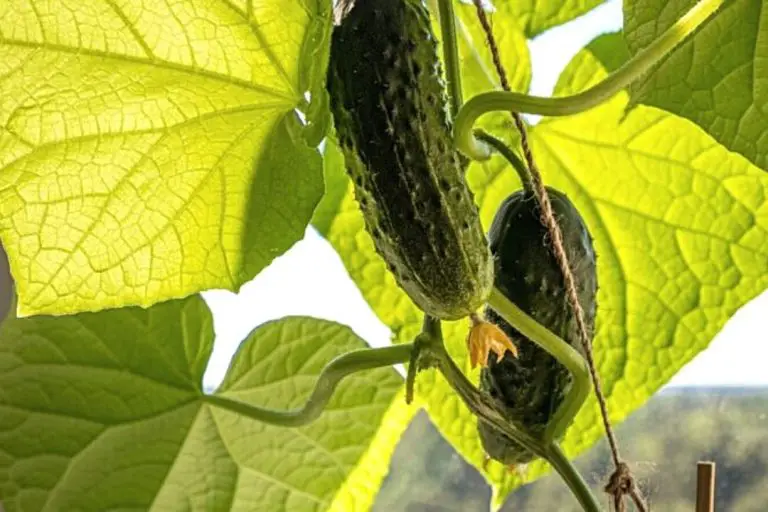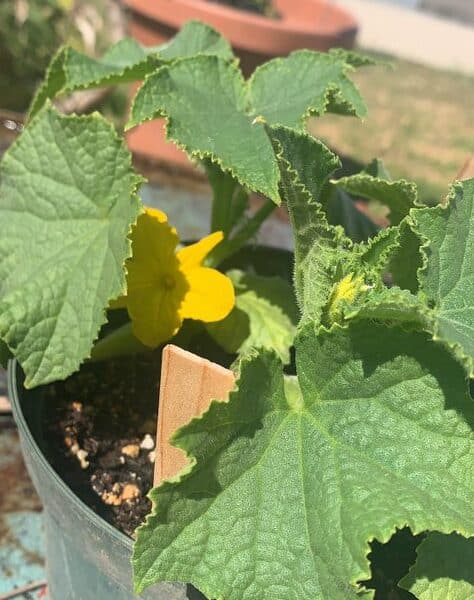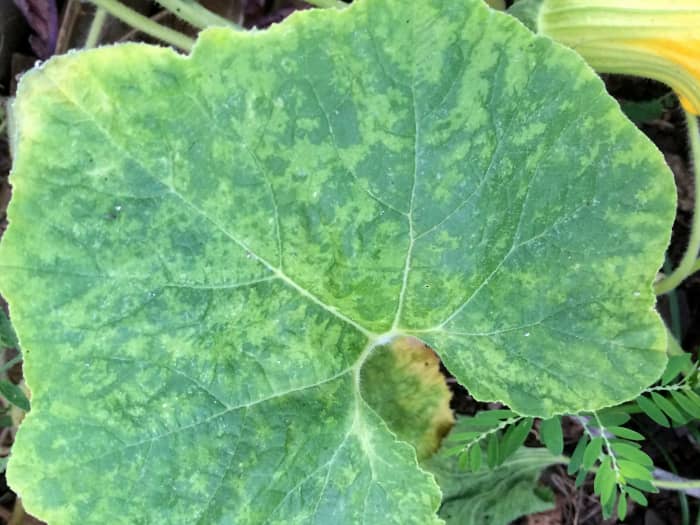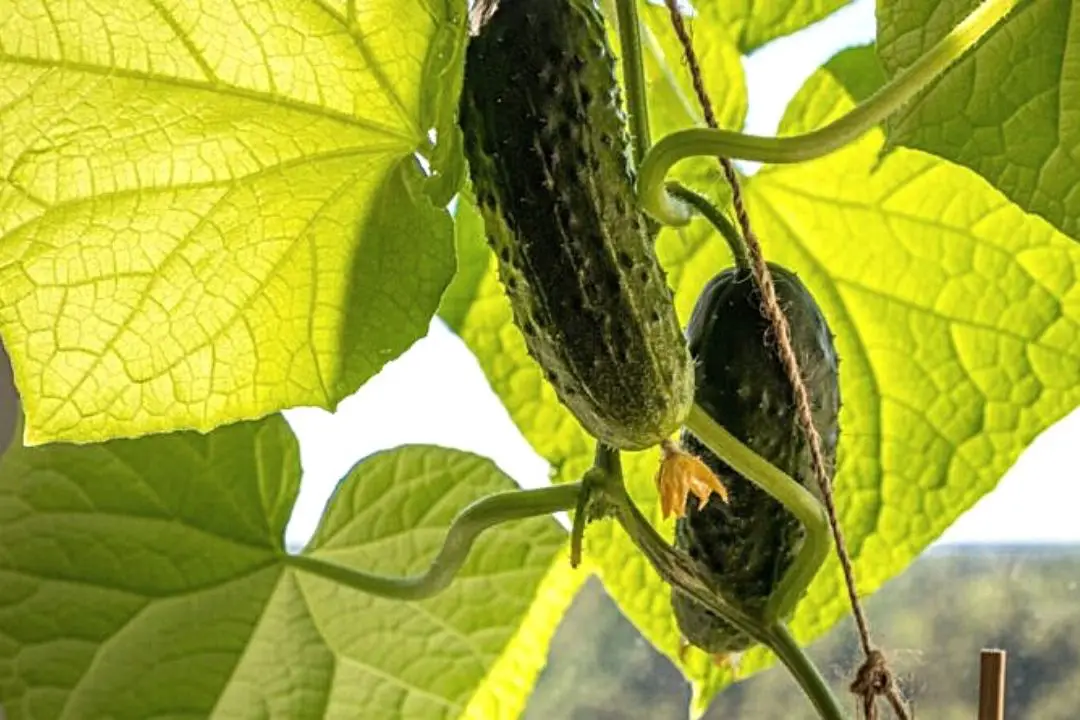Why Cucumber Leaves Turn Yellow: Common Causes and Solutions
Cucumber plants in containers are prone to various issues that can cause their leaves to turn yellow. Yellow leaves on cucumber plants in containers can be a sign of stress, and if left unaddressed, can lead to reduced yields and plant decline. To revive wilting cucumber plants, it’s essential to identify the underlying cause of yellow leaves and take corrective action.
One of the most common causes of yellow leaves on cucumber plants is overwatering. When the soil is consistently waterlogged, the roots can rot, causing the leaves to turn yellow and drop off. On the other hand, underwatering can also cause yellow leaves, as the plant is not receiving enough moisture to carry out its physiological processes.
Nutrient deficiencies are another common cause of yellow leaves on cucumber plants. Cucumbers require a balanced diet of nutrients, including nitrogen, phosphorus, and potassium, to grow and thrive. A lack of these essential nutrients can cause yellow leaves, stunted growth, and reduced yields.
Pests and diseases can also cause yellow leaves on cucumber plants. Aphids, whiteflies, and spider mites are common pests that can suck the sap from cucumber leaves, causing them to turn yellow and become distorted. Fungal diseases, such as powdery mildew and fusarium wilt, can also cause yellow leaves and reduce plant growth.
To address yellow leaves on cucumber plants in containers, it’s essential to inspect the plant carefully and identify the underlying cause. Check the soil moisture, nutrient levels, and pest and disease presence. Based on the diagnosis, take corrective action, such as adjusting the watering schedule, fertilizing the plant, or treating pests and diseases.
By understanding the common causes of yellow leaves on cucumber plants in containers and taking corrective action, gardeners can revive their wilting plants and enjoy a bountiful harvest. Regular monitoring and maintenance are key to preventing yellow leaves and ensuring the overall health and productivity of cucumber plants in containers.
How to Diagnose and Treat Nutrient Deficiencies in Container Cucumbers
Nutrient deficiencies are a common cause of yellow leaves on cucumber plants in containers. Cucumbers require a balanced diet of nutrients to grow and thrive, and a lack of essential nutrients can cause yellow leaves, stunted growth, and reduced yields. To diagnose nutrient deficiencies, it’s essential to monitor the plant’s visual symptoms and perform soil testing.
Visual symptoms of nutrient deficiencies in cucumber plants can include yellowing leaves, stunted growth, and reduced fruit production. Nitrogen deficiency can cause yellow leaves with green veins, while phosphorus deficiency can cause stunted growth and purple discoloration on the leaves. Potassium deficiency can cause yellow leaves with brown edges and reduced fruit production.
Soil testing is also crucial in diagnosing nutrient deficiencies in container cucumbers. A soil test can reveal the pH level and nutrient content of the soil, allowing gardeners to adjust their fertilization schedule accordingly. Most cucumbers prefer a slightly acidic to neutral soil pH, ranging from 6.0 to 7.0.
To treat nutrient deficiencies in container cucumbers, gardeners can use a balanced fertilizer that contains nitrogen, phosphorus, and potassium. Organic fertilizers, such as compost tea or fish emulsion, can also provide essential nutrients to the plant. It’s essential to follow the recommended application rates and timing to avoid overfertilization, which can cause more harm than good.
In addition to fertilizers, gardeners can also use other remedies to treat nutrient deficiencies in container cucumbers. For example, adding a small amount of Epsom salt to the soil can provide magnesium and sulfur, two essential nutrients for plant growth. Similarly, using a micronutrient-rich foliar spray can provide essential micronutrients to the plant.
By diagnosing and treating nutrient deficiencies in container cucumbers, gardeners can promote healthy plant growth and prevent yellow leaves. Regular monitoring and maintenance are key to preventing nutrient deficiencies and ensuring the overall health and productivity of cucumber plants in containers.
The Impact of Watering on Cucumber Plant Health: Tips for Container Gardeners
Watering is a critical aspect of growing healthy cucumber plants in containers. Both overwatering and underwatering can cause yellow leaves on cucumber plants, so it’s essential to find the right balance. In this section, we’ll discuss the importance of proper watering techniques for container-grown cucumbers and provide tips on how to avoid common mistakes.
Overwatering is a common mistake that can cause yellow leaves on cucumber plants. When the soil is consistently waterlogged, the roots can rot, causing the leaves to turn yellow and drop off. To avoid overwatering, it’s essential to check the soil moisture regularly. Stick your finger into the soil up to the first knuckle, and if the soil feels dry, it’s time to water.
Underwatering can also cause yellow leaves on cucumber plants. Cucumbers need consistent moisture to grow and thrive, so it’s essential to water them regularly. However, it’s also important to avoid getting water on the leaves to prevent fungal diseases. Instead, water at the base of the plant, allowing the soil to absorb the moisture.
Soil moisture monitoring is a crucial aspect of proper watering techniques for container-grown cucumbers. There are several ways to monitor soil moisture, including using a soil moisture meter or checking the soil’s moisture by feel. By monitoring soil moisture regularly, you can avoid overwatering and underwatering, which can cause yellow leaves on cucumber plants.
Irrigation scheduling is also important for container-grown cucumbers. Cucumbers need consistent moisture, especially when they’re producing fruit. Aim to water your cucumber plants when the top inch of soil feels dry to the touch. Avoid getting water on the leaves, and instead, water at the base of the plant.
By following these tips, you can avoid common watering mistakes that can cause yellow leaves on cucumber plants in containers. Remember to monitor soil moisture regularly, avoid overwatering and underwatering, and water at the base of the plant to prevent fungal diseases. With proper watering techniques, you can promote healthy plant growth and prevent yellow leaves on your cucumber plants.
Pests and Diseases that Cause Yellow Leaves on Cucumber Plants: Identification and Control
Pests and diseases can cause yellow leaves on cucumber plants, reducing yields and plant growth. In this section, we’ll discuss common pests and diseases that can cause yellow leaves on cucumber plants, including aphids, whiteflies, powdery mildew, and fusarium wilt. We’ll also provide guidance on how to control these pests and diseases using organic and integrated pest management (IPM) methods.
Aphids are small, soft-bodied insects that feed on plant sap, causing yellow leaves and stunted growth. To control aphids, use neem oil or insecticidal soap, and introduce natural predators like ladybugs or lacewings. Whiteflies are another common pest that can cause yellow leaves on cucumber plants. Use yellow sticky traps or insecticidal soap to control whiteflies.
Powdery mildew is a fungal disease that causes yellow leaves and a white, powdery coating on the leaves. To control powdery mildew, use fungicides like sulfur or copper, and improve air circulation around the plants. Fusarium wilt is a soil-borne disease that causes yellow leaves and wilting. To control fusarium wilt, use fungicides like benomyl or thiophanate-methyl, and improve soil drainage.
Integrated pest management (IPM) is a holistic approach to controlling pests and diseases. IPM involves using a combination of techniques, including cultural controls, biological controls, and chemical controls. Cultural controls include practices like pruning, training, and sanitation. Biological controls include introducing natural predators or parasites. Chemical controls include using pesticides or fungicides.
Organic pest control methods are a popular choice for gardeners who want to avoid using synthetic chemicals. Organic methods include using neem oil, insecticidal soap, and diatomaceous earth. Neem oil is a natural insecticide that can control aphids, whiteflies, and other pests. Insecticidal soap is a gentle pesticide that can control soft-bodied insects. Diatomaceous earth is a natural substance that can control slugs and snails.
By identifying and controlling pests and diseases, you can prevent yellow leaves on cucumber plants and promote healthy plant growth. Remember to use a combination of techniques, including cultural controls, biological controls, and chemical controls, to achieve the best results.
Container Size and Soil Quality: How to Optimize Growing Conditions for Cucumbers
Container size and soil quality are crucial factors in growing healthy cucumbers in containers. A well-chosen container and high-quality soil can help prevent yellow leaves on cucumber plants and promote optimal growth. In this section, we’ll discuss the importance of container size and soil quality for growing cucumbers and provide tips on how to optimize these factors.
Container size is critical for cucumber plants, as it affects the root system and overall growth. A container that is too small can cause the roots to become root-bound, leading to yellow leaves and stunted growth. On the other hand, a container that is too large can cause the soil to become too wet, leading to root rot and other problems. Choose a container that is at least 6-8 inches deep and has good drainage holes to prevent waterlogged soil.
Soil quality is also essential for growing healthy cucumbers. Cucumbers prefer well-draining, fertile soil that is rich in organic matter. Avoid using regular potting soil, as it can be too dense and may not provide the necessary drainage. Instead, use a high-quality potting mix that is specifically designed for containers. Add organic matter like compost or well-rotted manure to improve soil fertility and structure.
Drainage is a critical factor in container gardening, as it helps prevent waterlogged soil and root rot. Make sure the container has good drainage holes to prevent water from accumulating in the soil. You can also add a layer of perlite or vermiculite to the soil to improve drainage and aeration.
Aeration is also important for cucumber plants, as it helps promote healthy root growth and prevents soil compaction. Use a fork or spade to gently aerate the soil, taking care not to damage the roots. You can also add a layer of mulch to the soil to help retain moisture and suppress weeds.
By choosing the right container size and soil quality, you can optimize growing conditions for your cucumber plants and prevent yellow leaves. Remember to provide good drainage, aeration, and nutrient availability to promote healthy growth and prevent common problems.
Pruning and Training Cucumber Plants for Better Air Circulation and Sunlight Penetration
Pruning and training cucumber plants are essential techniques for promoting healthy growth and preventing yellow leaves. By pruning and training your cucumber plants, you can improve air circulation, increase sunlight penetration, and reduce the risk of disease. In this section, we’ll discuss the benefits of pruning and training cucumber plants and provide guidance on how to do it effectively.
Pruning cucumber plants helps to promote healthy growth by removing weak and spindly growth, and encouraging the plant to focus its energy on producing fruit. Prune your cucumber plants regularly to remove any dead or damaged leaves, and to encourage bushy growth. Use clean and sharp pruning tools to prevent spreading disease.
Training cucumber plants is also important for promoting healthy growth and preventing yellow leaves. Train your cucumber plants to climb up a trellis or other support, to improve air circulation and increase sunlight penetration. This will also help to reduce the risk of disease, by allowing air to circulate around the plant and preventing moisture from accumulating on the leaves.
Use a trellis or other support to train your cucumber plants to climb. You can also use a cage or other support to provide structure for the plant. Make sure the support is sturdy and can hold the weight of the plant, and provide enough space for the plant to grow.
Pruning and training cucumber plants can also help to improve fruit production. By promoting healthy growth and preventing disease, you can encourage your cucumber plants to produce more fruit. Prune your cucumber plants regularly to encourage fruiting, and train them to climb up a trellis or other support to improve air circulation and increase sunlight penetration.
By pruning and training your cucumber plants, you can promote healthy growth, prevent yellow leaves, and improve fruit production. Remember to prune and train your cucumber plants regularly, and provide enough support for the plant to grow.
Common Mistakes to Avoid When Growing Cucumbers in Containers
When growing cucumbers in containers, there are several common mistakes to avoid in order to ensure healthy plant growth and prevent yellow leaves. In this section, we’ll discuss some of the most common mistakes to avoid and provide tips on how to prevent them.
Inadequate sunlight is a common mistake that can cause yellow leaves on cucumber plants. Cucumbers need at least 6 hours of direct sunlight per day to grow and thrive. Make sure to place your container in a location that receives sufficient sunlight, and consider using grow lights if necessary.
Poor soil quality is another common mistake that can cause yellow leaves on cucumber plants. Cucumbers prefer well-draining, fertile soil that is rich in organic matter. Avoid using regular potting soil, and instead opt for a high-quality potting mix that is specifically designed for containers.
Insufficient watering is a common mistake that can cause yellow leaves on cucumber plants. Cucumbers need consistent moisture to grow and thrive, but overwatering can be just as detrimental. Make sure to water your cucumber plants regularly, but avoid getting water on the leaves to prevent fungal diseases.
Not providing enough support is another common mistake that can cause yellow leaves on cucumber plants. Cucumbers are climbing plants that need support to grow and thrive. Make sure to provide a trellis or other support for your cucumber plants to climb on, and train them to climb up the support using twine or clips.
By avoiding these common mistakes, you can ensure healthy plant growth and prevent yellow leaves on your cucumber plants. Remember to provide sufficient sunlight, use high-quality soil, water consistently, and provide enough support for your cucumber plants to grow and thrive.
Conclusion: Reviving Yellow Leaves on Cucumber Plants in Containers
Yellow leaves on cucumber plants in containers can be a frustrating problem for gardeners. However, by identifying the underlying cause and taking corrective action, you can revive your wilting cucumber plants and promote healthy growth. In this article, we’ve discussed the common causes of yellow leaves on cucumber plants, including overwatering, underwatering, nutrient deficiencies, and pests.
We’ve also provided guidance on how to diagnose and treat nutrient deficiencies, the importance of proper watering techniques, and how to control pests and diseases using organic and integrated pest management (IPM) methods. Additionally, we’ve discussed the importance of container size and soil quality, pruning and training cucumber plants, and common mistakes to avoid when growing cucumbers in containers.
To summarize, here is a final checklist for troubleshooting yellow leaves on cucumber plants in containers:
- Check for overwatering or underwatering and adjust your watering schedule accordingly.
- Test your soil for nutrient deficiencies and treat with fertilizers or other remedies as needed.
- Inspect your plants for pests and diseases and control them using organic and IPM methods.
- Ensure your container is the right size and has good drainage and aeration.
- Prune and train your cucumber plants to promote better air circulation and sunlight penetration.
- Avoid common mistakes such as inadequate sunlight, poor soil quality, and insufficient watering.
By following these steps and taking corrective action, you can revive your wilting cucumber plants and promote healthy growth. Remember to monitor your plant’s progress and adjust your care routine as needed. With proper care and attention, your cucumber plants should thrive and produce a bountiful harvest.






:max_bytes(150000):strip_icc()/why-are-cucumbers-bitter-1403369-07-9b2cc47c902248508cd562ad49f8d339.jpg)
